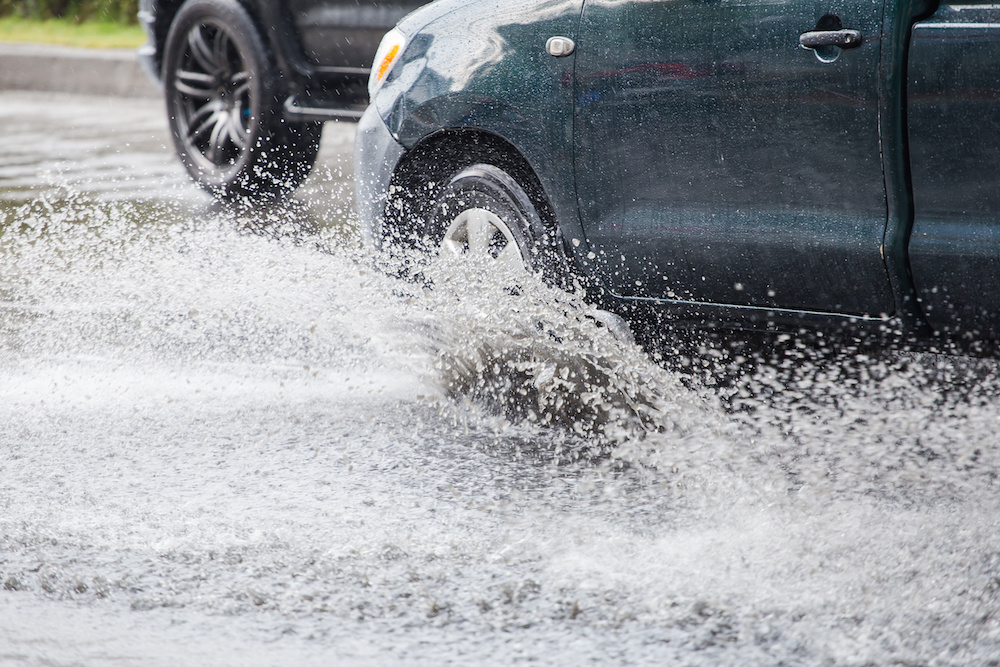Our last blog focused on safe vehicles for your teen drivers. While the safety features we recommend are important for new drivers, they are also a plus for seasoned drivers. The topic this month is hydroplaning, an all-too-common occurrence here in the Northwest. Wet roads, often piled with leaves or pine needles, require specific driving skills and automotive equipment.
Let’s begin with some basic concepts. For the person who may be new to the Northwest (or new to driving), to “hydroplane” means your vehicle is sliding or skidding on a wet surface.1 Keep in mind that many older vehicles may leak small amounts of oil or antifreeze as they travel the roadways. It may not be visible as you drive, but when you add even a light rain the surface of the road becomes slick. Most tires will displace water as they contact the road surface. Sometimes, though, the tires will encounter more water than they can scatter. When this happens, your tires may push water under the tire, creating a film of water between the tire and road surface – and that is where the danger begins. Hydroplaning can cause the driver to lose control of steering due to a loss of traction and can prevent safe braking – conditions which can lead to an increased chance of being involved in an accident.
So, how do you prevent hydroplaning?
- Keep your tires in good shape. Check and adjust tire pressure on a regular basis, rotate and balance tires at every other oil change (roughly 7-10 thousand miles). When replacing tires, choose a tread style that is designed to prevent hydroplaning.
- Do not use the cruise control when driving in the rain.
- Along that same line, reduce speed for even a light rain. Avoid accelerating on a wet surface, which can cause a loss of traction even with good tire tread.
- When braking, do so with caution. Although modern vehicles will have anti-lock brakes as a standard feature, it is best to brake gently on wet surfaces.
- Avoid hard, sharp, or sudden turns. Slow and easy is the way to prevent hydroplaning when you turn.
- Also, avoid puddles and standing water in the roadway.
Sometimes, no matter how careful a driver is, the hydroplaning is unavoidable – stuff happens! In the event that your vehicle begins to hydroplane, remember these simple actions:
- Release the accelerator (the gas pedal) but don’t touch the brakes. Braking may cause a total loss of control.
- It may seem counterintuitive, but gently turn the steering wheel in the direction of the skid. This will allow the vehicle to realign with the road.
- When the tires reconnect with the road surface, it will be obvious. The hydroplane is over and you survived.
- A final note – if a hydroplane experience “rattles your nerves” it may be best to find a safe place to pull off the road, take a few deep breaths and calm yourself. Chances are, you handled it like a pro!


